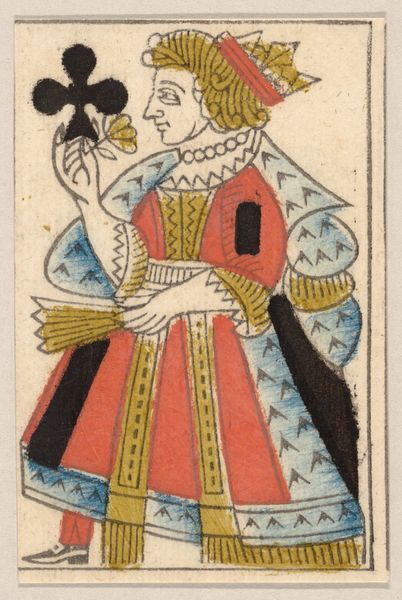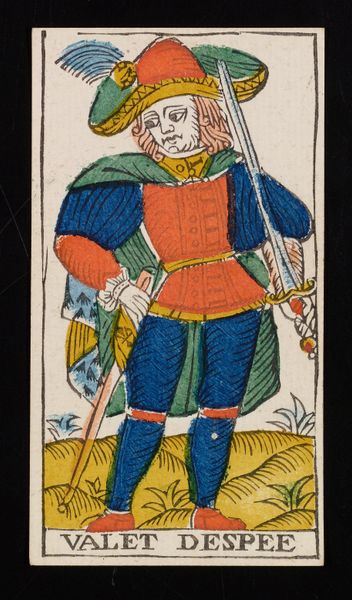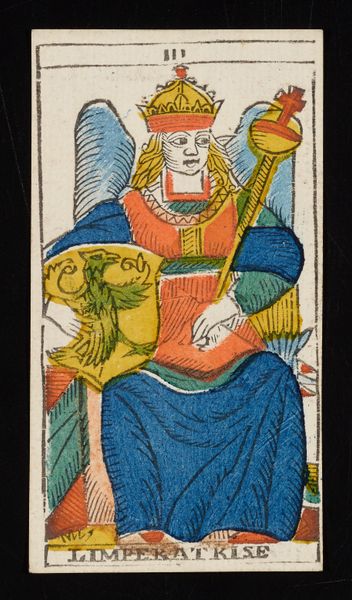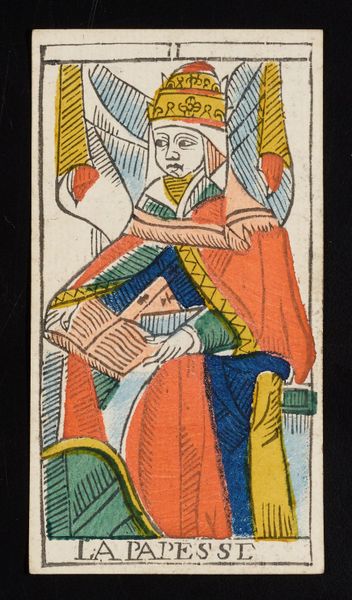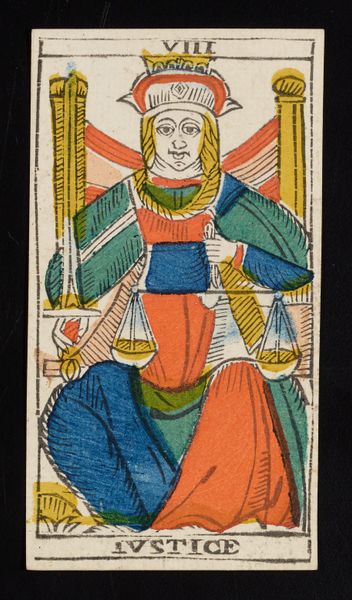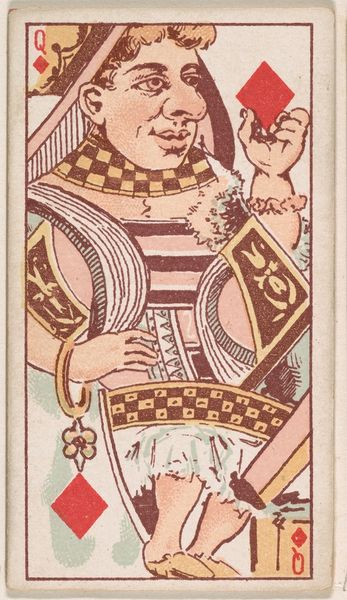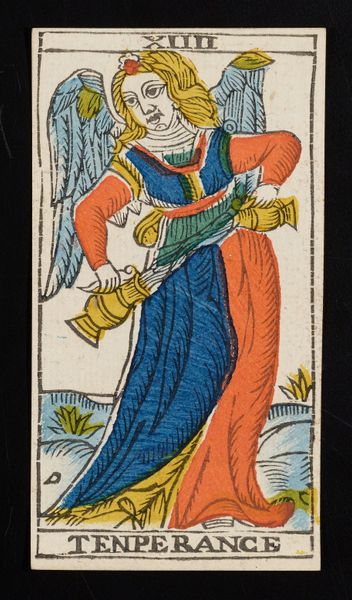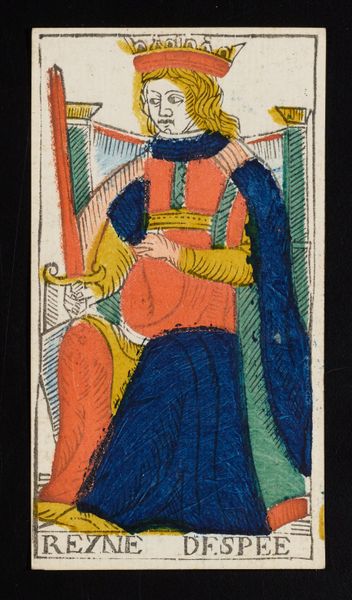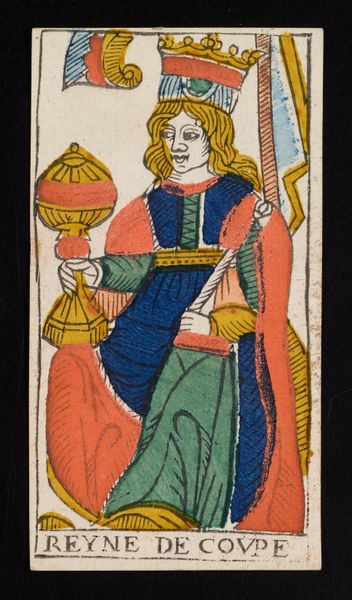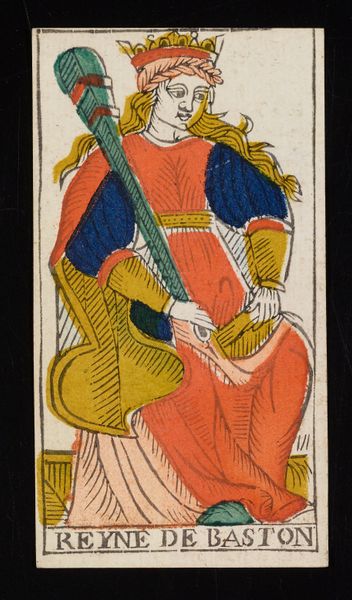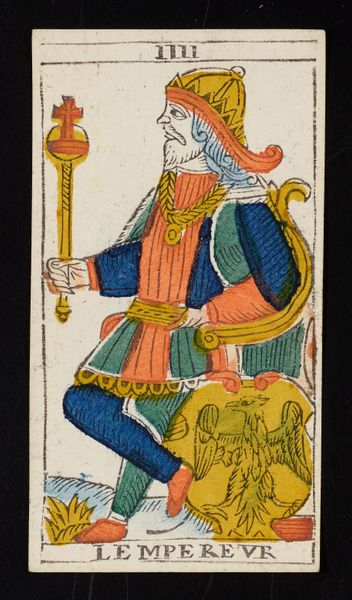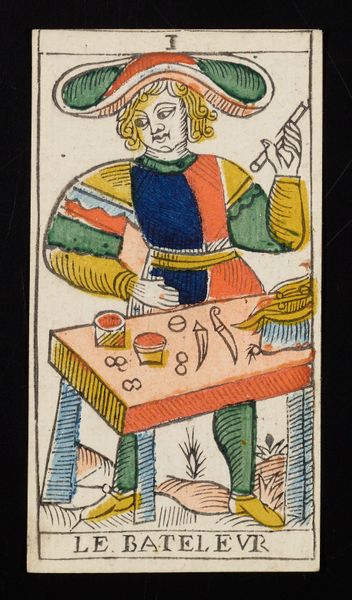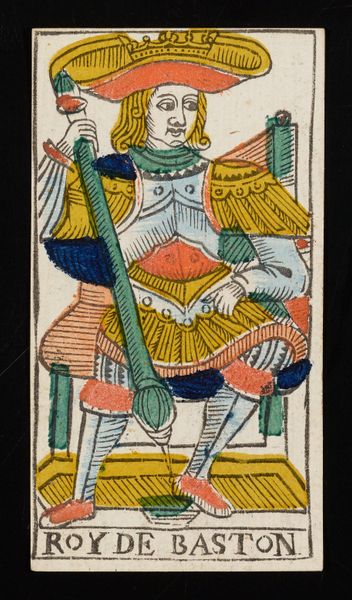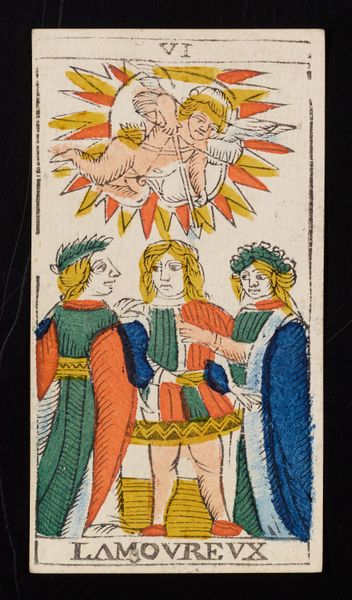
King of Hearts, from a Set of Piquet Cards 1770 - 1826
0:00
0:00
drawing, coloured-pencil, print
#
portrait
#
drawing
#
toned paper
#
coloured-pencil
# print
#
bird
#
figuration
#
coloured pencil
#
sketchbook drawing
#
watercolour illustration
Dimensions: sheet: 3 3/8 x 2 1/4 in. (8.6 x 5.7 cm)
Copyright: Public Domain
Editor: Here we have Claude Fayolle's "King of Hearts," made with colored pencil, likely between 1770 and 1826. I'm really struck by how flat the figure seems. It's like a medieval tapestry but rendered in these delicate colors. What are your thoughts on this work? Curator: It is primarily important to note how the artist manipulated line and color to achieve a desired effect. Notice how the stark outline delineates form, trapping blocks of watercolor illustration, somewhat clumsily executed, but creating a definite spatial tension on the toned paper. How do you perceive the distribution of colour across the composition? Editor: It seems very strategic, doesn't it? Like the red heart at the top balancing the red robes, or the hints of blue mirrored in his crown and tunic. Do you think those colour choices reflect a deeper symbolism? Curator: Symbolism is perhaps a loose term here; it may distract us from considering other inherent relationships in the artist's process and vision. Consider how Fayolle utilizes repetition, for instance – the repeated fleur-de-lis, the heart shapes echoed subtly in the king's features, how this lends itself to the overall aesthetic effect. Editor: So, rather than seeking a narrative, you're more focused on how the elements create a unified visual experience? Curator: Precisely. The focus should always be on how an artist leverages material and structure. This reveals more than speculative, semantic interpretations. Editor: I see. Focusing on composition rather than potential narrative opens up a different appreciation for the artwork. Thanks! Curator: Indeed. The objective consideration of compositional and construction elements, line, tone, etc. provides a great benefit in assessing all artworks.
Comments
No comments
Be the first to comment and join the conversation on the ultimate creative platform.
